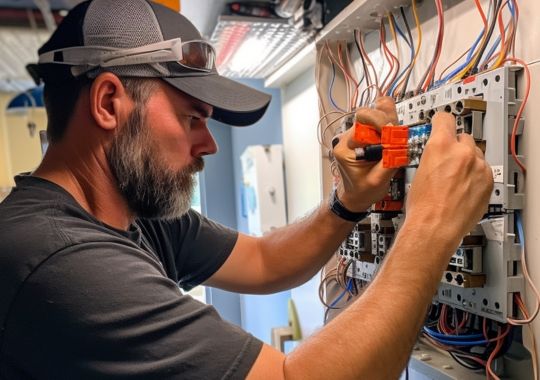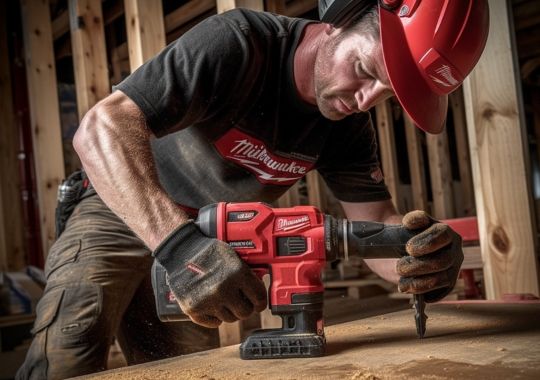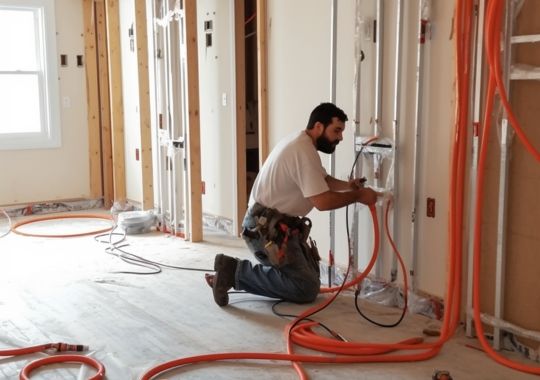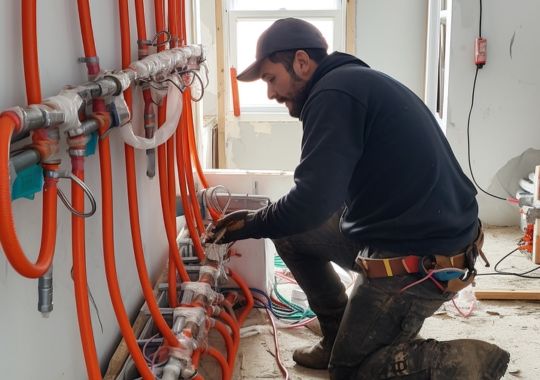If you're involved in plumbing projects or have an interest in plumbing systems, you may have come across the term "PEX crimping." But what exactly is PEX crimping, and why is it important? In this comprehensive guide, we will explore the world of PEX crimping, its significance, and how it plays a vital role in creating reliable plumbing connections.
The Basics of PEX Crimping
PEX crimping is a method used to connect PEX (cross-linked polyethylene) tubing to fittings, creating secure and leak-free connections. It involves using a specialized tool to compress a metal ring, known as a crimp ring or cinch clamp, around the PEX tubing and fitting. This compression forms a tight seal, ensuring a reliable connection that can withstand the test of time.
PEX crimping offers several advantages over other connection methods. It is cost-effective, simple to perform, and requires minimal time and effort. The flexibility and durability of PEX tubing, combined with the secure crimping method, make it an excellent choice for various plumbing applications.

Why is PEX Crimping Important?
Proper crimping is essential for the longevity and efficiency of plumbing systems. Here are some key reasons why PEX crimping is important:
1. Leak Prevention:
A reliable and leak-free plumbing system is crucial to avoid water damage, mold growth, and costly repairs. PEX crimping ensures tight and secure connections that minimize the risk of leaks. The crimp ring evenly distributes pressure around the PEX tubing, creating a watertight seal that withstands water pressure and temperature fluctuations.
2. Durability and Longevity:
PEX crimping provides durable connections that can withstand the demands of plumbing systems. The metal crimp ring, when properly compressed, forms a strong bond between the PEX tubing and fitting. This bond can resist external forces, temperature variations, and the natural expansion and contraction of the pipes, ensuring long-term reliability.
3. Flexibility and Versatility:
PEX crimping allows for flexibility and versatility in plumbing installations. The ability to create secure connections quickly and efficiently enables plumbing professionals to navigate tight spaces, bend the tubing, and route it around obstacles with ease. PEX crimping adapts well to a range of plumbing applications, including residential, commercial, and even radiant heating systems.
4. Cost-Effectiveness:
PEX crimping offers cost savings in terms of material and labor. PEX tubing is generally more affordable than traditional metal pipes, and the crimping process is straightforward and efficient. The simplicity of the crimping method reduces the installation time and minimizes the need for specialized tools or complicated procedures, resulting in

The Importance of Proper PEX Crimping
When it comes to plumbing systems, the importance of proper PEX crimping cannot be overstated. Crimping is a critical step in creating secure and reliable connections between PEX tubing and fittings. Let's explore why proper PEX crimping is so crucial.
1. Leak Prevention
One of the primary reasons for emphasizing proper PEX crimping is leak prevention. A secure crimp ensures a tight seal between the PEX tubing and fitting, effectively preventing water or gas leaks. Leaks can cause significant damage to structures, leading to costly repairs and potential health hazards from mold growth. By achieving proper crimps, you can have peace of mind knowing that your plumbing system is protected against leaks.
2. Long-Term Durability
Proper crimping contributes to the long-term durability of the plumbing system. When the crimp ring is compressed correctly, it creates a robust connection that can withstand the rigors of water flow, pressure changes, and environmental factors. The reliable bond formed through proper crimping ensures that the PEX tubing and fitting remain securely connected over time, minimizing the risk of failures and the need for repairs or replacements.
3. System Efficiency
Efficiency is another important aspect of proper PEX crimping. A well-executed crimp provides optimal flow through the plumbing system. Properly compressed crimp rings maintain a smooth interior surface, allowing water or gas to flow freely without restrictions or turbulence. This enhances the overall efficiency of the system, minimizing pressure drops and improving the performance of fixtures and appliances.
4. Safety and Compliance
Ensuring proper PEX crimping is also crucial for safety and compliance with plumbing codes and regulations. Plumbing standards often dictate the specific requirements for crimping methods, ring types, and sizes. By adhering to these standards and using approved crimping techniques, you can meet the necessary safety guidelines and ensure compliance with local building codes.
5. Peace of Mind
Proper PEX crimping provides peace of mind for homeowners, plumbers, and building owners. Knowing that the plumbing connections are securely crimped reduces the worry of potential leaks and associated damages. It allows you to have confidence in the reliability and longevity of the plumbing system, saving you from unexpected headaches and expenses down the line.

Do I Need a Special Tool to Crimp PEX?
Yes, you do need a special tool to crimp PEX tubing. The crimping process requires a dedicated PEX crimping tool designed specifically for creating secure connections between PEX tubing and fittings. These tools apply the necessary pressure to compress a metal crimp ring or cinch clamp around the PEX tubing and fitting, forming a tight seal.
Using a specialized PEX crimping tool is essential for several reasons:
1. Proper Compression:
A PEX crimping tool ensures consistent and even compression of the crimp ring onto the PEX tubing and fitting. This uniform compression creates a secure connection that prevents leaks and withstands the demands of the plumbing system. Using alternative tools that are not designed for PEX crimping can result in inadequate compression, compromising the integrity of the connection.
2. Compatibility:
PEX crimping tools are specifically designed to work with PEX tubing and crimp rings of various sizes. These tools are engineered to accommodate the different diameters of PEX tubing commonly used in plumbing applications. Using the correct crimping tool ensures compatibility with the specific size of PEX tubing you are working with, ensuring a proper fit and secure connection.
3. Efficiency and Ease of Use:
PEX crimping tools are designed for ease of use and efficiency. They are typically lightweight, handheld tools that allow for precise positioning and control during the crimping process. The ergonomic design and features such as ratcheting mechanisms or quick-release functionality make crimping easier and more efficient, reducing installation time and effort.
4. Reliability and Longevity:
Specialized PEX crimping tools are manufactured to meet industry standards and undergo rigorous testing for durability and performance. Using a reputable crimping tool from a trusted manufacturer ensures reliability and longevity. These tools are designed to withstand the demands of repetitive crimping tasks, providing consistent results and reducing the risk of tool failure.

Different Types of PEX Crimping Tools
When it comes to PEX crimping, there are several types of tools available to suit different needs and preferences. Let's explore the different types of PEX crimping tools:
4.1. Manual PEX Crimping Tools
Manual PEX crimping tools are the most common and widely used type of crimping tool. These handheld tools rely on manual force to compress the crimp ring onto the PEX tubing and fitting. They typically feature long handles for better leverage and come in various sizes to accommodate different PEX tubing diameters. Manual crimping tools are affordable, simple to use, and suitable for small to medium-sized plumbing projects.
4.2. Hydraulic PEX Crimping Tools
Hydraulic PEX crimping tools are powered by hydraulic pressure, making the crimping process more efficient and less labor-intensive. These tools use a hydraulic mechanism to generate the necessary force for crimping. Hydraulic crimping tools provide increased compression force, resulting in secure and consistent connections. They are ideal for larger plumbing projects or situations where a high volume of connections needs to be made. Although hydraulic tools are generally more expensive, they offer improved efficiency and precision.
4.3. Battery-Powered PEX Crimping Tools
Battery-powered PEX crimping tools offer the convenience of cordless operation, eliminating the need for manual force or hydraulic pressure. These tools are equipped with rechargeable batteries and motorized mechanisms that generate the required crimping force. Battery-powered crimping tools offer portability and ease of use, allowing for increased maneuverability in tight spaces. They are suitable for both small and large-scale plumbing projects, providing efficient and reliable crimping without the need for physical exertion.
4.4. PEX Crimping Tool Kits
PEX crimping tool kits offer a comprehensive solution for PEX crimping, providing a combination of tools and accessories necessary for various crimping tasks. These kits typically include multiple sizes of crimping tools, interchangeable jaws for different PEX tubing diameters, deburring tools, and carrying cases for storage and transportation. Crimping tool kits offer versatility and convenience, making them an excellent choice for professionals or individuals who require flexibility and a range of crimping options.
Each type of PEX crimping tool has its own advantages and considerations. The choice of tool depends on factors such as the scale of the project, budget, desired level of convenience, and personal preferences. It's important to select a high-quality tool from a reputable manufacturer and follow the manufacturer's guidelines for proper usage and maintenance.

Factors to Consider When Choosing a PEX Crimping Tool
Selecting the right PEX crimping tool is crucial for achieving secure and reliable connections in your plumbing projects. Here are some important factors to consider when choosing a PEX crimping tool:
5.1. Size Compatibility
One of the key factors to consider is size compatibility. Ensure that the crimping tool you choose is compatible with the size of PEX tubing you will be working with. Different crimping tools are designed to accommodate specific PEX tubing diameters, such as 1/2 inch, 3/4 inch, or 1 inch. Verify that the tool you select can effectively crimp the size of PEX tubing required for your plumbing project.
5.2. Durability and Quality
Durability and quality are essential considerations to ensure the longevity and reliability of the crimping tool. Look for a tool made from high-quality materials that can withstand frequent use and provide consistent results. Tools made from sturdy materials like stainless steel or high-strength alloys tend to be more durable. Reading customer reviews and selecting tools from reputable manufacturers can help gauge the overall quality and durability of the tool.
5.3. Ease of Use
Consider the ease of use of the crimping tool, especially if you anticipate working in tight or hard-to-reach spaces. Look for tools with ergonomic designs and comfortable handles to minimize fatigue during extended use. Tools with features like ratcheting mechanisms or quick-release functionality can also enhance ease of use, allowing for efficient crimping with minimal effort.
5.4. Cost-effectiveness
Cost-effectiveness is an important factor to consider when selecting a crimping tool. Set a budget that aligns with your requirements and project scale. Manual crimping tools are generally more affordable, while hydraulic or battery-powered tools tend to be pricier. Consider the value the tool provides in terms of its features, durability, and efficiency. Remember that investing in a high-quality tool may offer better long-term performance and cost savings compared to cheaper alternatives.
5.5. Additional Features and Accessories
Some crimping tools offer additional features and accessories that can enhance their usability and versatility. These may include built-in gauges or adjustment mechanisms for achieving precise crimping pressure, interchangeable jaws for accommodating different PEX tubing sizes, or integrated deburring tools for preparing the tubing ends. Assess the specific features offered by different tools and determine which ones align with your project requirements and preferences.
By considering these factors, you can make an informed decision and select a PEX crimping tool that suits your needs and ensures reliable and secure connections. Remember to follow the manufacturer's guidelines and recommendations specific to your crimping tool and PEX system.

Step-by-Step Guide: How to Crimp PEX Tubing
Crimping PEX tubing is a straightforward process when you have the right tools and follow the correct steps. Here is a step-by-step guide to help you crimp PEX tubing effectively:
6.1. Gather the Required Materials
Before starting the crimping process, gather all the necessary materials and tools. This includes PEX tubing, crimp rings, fittings, a measuring tape, a PEX cutting tool, and the appropriate crimping tool based on the size of your PEX tubing.
6.2. Measure and Cut PEX Tubing
Measure the required length of PEX tubing for your plumbing project using a measuring tape. Use a PEX cutting tool to make a clean, square cut at the measured point. Ensure the tubing end is free from any burrs or debris.
6.3. Slide the Crimp Ring onto the Tubing
Slide a crimp ring onto the end of the PEX tubing. Make sure the crimp ring is positioned close to the end, allowing space for the fitting to be inserted.
6.4. Insert the Fitting into the Tubing
Insert the fitting into the open end of the PEX tubing until it reaches the marked insertion point. Ensure the fitting is fully inserted, creating a tight connection.
6.5. Position the Crimping Tool
Position the crimping tool over the crimp ring, aligning it correctly. Ensure the jaws of the tool are centered over the crimp ring and that the tool is perpendicular to the tubing.
6.6. Crimp the Ring onto the Tubing
Squeeze the handles of the crimping tool firmly and completely to compress the crimp ring onto the PEX tubing. Apply steady pressure until the tool handles are fully closed.
6.7. Inspect the Connection
Release the handles of the crimping tool to remove it from the crimped ring. Inspect the crimped connection to ensure it is properly compressed. The crimp ring should be visibly deformed around the tubing, providing a secure and leak-free connection.
Repeat the above steps for each PEX connection required in your plumbing system. Remember to follow the manufacturer's guidelines and recommendations specific to your crimping tool and PEX system.

Troubleshooting Common PEX Crimping Issues
Even with proper technique and the right tools, you may encounter some challenges during the PEX crimping process. Here are some common issues that can occur and how to troubleshoot them:
7.1. Dealing with Improper Crimping
Issue: Incomplete or uneven compression of the crimp ring.
Solution: Ensure that the crimping tool is centered over the crimp ring and perpendicular to the tubing. Apply sufficient pressure to fully compress the crimp ring onto the tubing. If using a manual tool, make sure to squeeze the handles completely. Double-check that the crimp ring is properly positioned before crimping.
Issue: Over-crimping or under-crimping the connection.
Solution: Follow the manufacturer's guidelines for the recommended crimping pressure. Over-crimping can deform the PEX tubing and compromise the connection's integrity. Under-crimping may result in weak connections that are prone to leaks. If necessary, use a crimp gauge tool to verify the proper compression of the crimp ring.
7.2. Addressing Leaks and Weak Connections
Issue: Water leaks or weak connections after crimping.
Solution: Inspect the crimped connection visually. Ensure that the crimp ring is fully deformed around the tubing and there are no visible gaps or deformations. If leaks or weak connections are observed, it may indicate insufficient compression. Cut out the crimped connection, prepare the tubing end again, and re-crimp using the correct technique and pressure.
7.3. Fixing Compatibility Problems with Tools and Fittings
Issue: Tools or fittings from different manufacturers are not compatible.
Solution: Ensure that the crimping tool and fittings you are using are from the same manufacturer or are specifically designed to be compatible. Different manufacturers may have variations in crimp ring sizes or tool designs, which can lead to compatibility issues. Check the manufacturer's guidelines and recommendations to ensure proper compatibility and achieve reliable connections.
Issue: Fittings do not fully insert into the PEX tubing.
Solution: Ensure that the PEX tubing end is cut cleanly and squarely. Remove any burrs or debris that may hinder the insertion of fittings. Lubricate the tubing and fitting with a small amount of approved lubricant to ease the insertion process. If the fitting still does not fully insert, check for any obstructions or deformations and make the necessary adjustments.
By addressing these common issues and following proper techniques, you can troubleshoot and overcome challenges during the PEX crimping process. Remember to consult the manufacturer's guidelines and recommendations for specific troubleshooting steps and refer to professional assistance if needed.

conclusion
Understanding and implementing proper PEX crimping techniques are crucial for achieving secure and reliable plumbing connections. We discussed the importance of using a specialized crimping tool designed for PEX connections and explored different types of PEX crimping tools available, including manual, hydraulic, battery-powered, and tool kits.
We also highlighted key factors to consider when choosing a PEX crimping tool, such as size compatibility, durability, ease of use, cost-effectiveness, and additional features. Considering these factors will help you make an informed decision and select a tool that meets your project requirements.
Additionally, we provided a step-by-step guide on how to crimp PEX tubing, covering the essential steps from gathering materials to inspecting the crimped connection. Following this guide ensures a systematic and successful crimping process.
Furthermore, we addressed common troubleshooting issues, such as improper crimping, leaks, weak connections, and compatibility problems. By understanding and troubleshooting these issues, you can overcome challenges that may arise during the PEX crimping process.
Remember, proper PEX crimping is vital for leak prevention, durability, system efficiency, and overall safety. By following manufacturer's guidelines, using high-quality materials, and adhering to industry standards, you can achieve reliable and long-lasting PEX connections in your plumbing projects.
Whether you're a DIY enthusiast or a professional plumber, mastering the art of PEX crimping will empower you to tackle plumbing projects with confidence. So, equip yourself with the right tools, follow the recommended techniques, and enjoy the benefits of secure and efficient plumbing connections.
If you have any further questions or require assistance, consult professional plumbers or refer to the manufacturer's guidelines for specific details related to your PEX crimping tool and system. Happy crimping!
Frequently Asked Questions FAQs
Do I need a special tool to crimp PEX?
Yes, a special tool designed for crimping PEX is required. It ensures proper compression of the crimp ring onto the tubing, creating secure connections.
Can I use other tools or methods for crimping PEX?
It is recommended to use a dedicated PEX crimping tool for reliable connections. Other tools or methods may not provide adequate compression, risking leaks or weak connections.
Are all PEX crimping tools the same?
No, there are different types of PEX crimping tools available, such as manual, hydraulic, and battery-powered tools. Each has its own features and advantages, so choose one that suits your needs.










